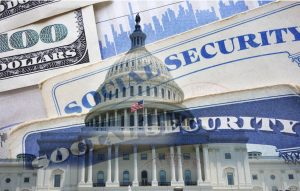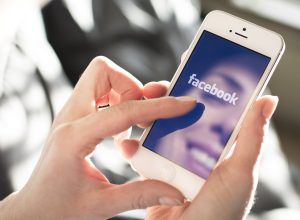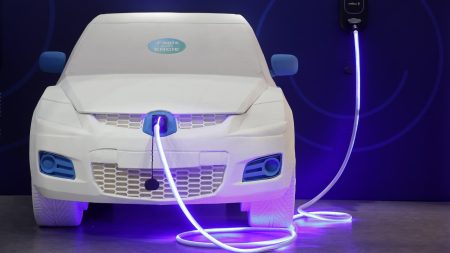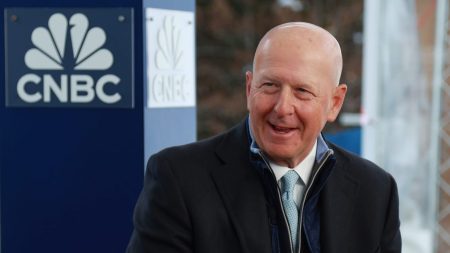In one quarter — one off-cycle quarter that didn’t feature a no new iPhone — Apple (AAPL) delivered a whopping $81.8 billion in sales. That was despite a 4% currency headwind from all the new business coming out of Indonesia, India, the Philippines, Mexico and Turkey. Services revenue is gigantic at $21 billion, up 8% over last year. Gross margins of 44.5% is a record for the June quarter. And most important: There is an installed base of 2 billion devices. That means there’s a huge amount of iPhones, wearables, iPads and Macs to sell when each product is revamped. It was an astonishing quarter for the world’s most tech valuable company. And it was met with an astonishingly negative reaction on the Street. Shares are down nearly 5% since Apple reported its results on Thursday after the bell, and nearly every news story says the same thing: This spells the end to Apple’s premium multiple and its $3 trillion market valuation. A few things to consider. First, Apple’s stock is still up 40% for the year. Second, some analysts got way too ahead in their growth estimates, including some right before the quarter. Those analysts should spend some valuable time with their families. Third, this was not an important quarter for this important company, but because of the way the Magnificent Seven mega-caps and their brethren are valued, Apple needs to absolutely crush estimates to please investors. As usual, I spoke to Apple CEO Tim Cook before the quarter was announced. My focus was on just two things: the services revenue and its components, including streaming service Apple TV+ and VisionPro, its mixed-reality headset. I have spent some time wearing the VisionPro and I love it. The ease with which you go in and out of the virtual world, eyes left or eyes right. The usefulness in so many cases, whether it be watching TV or doing work. Or best of all: the better way to watch entertainment, including all (potentially) of ESPN is so exciting that it overcomes the two key negatives: awkwardness and a hefty price tag (around $3,500). The latter can be dealt with my suggestion of a “buy now, pay later” option, which the company hasn’t considered yet. The Vision Pro can also be used a come on to switch carriers that is actively being debated away from Apple. The former, the services revenue, is rather extraordinary. A billion subs is monumental. I know the subscription business and it is sticky as all get out. You can eventually run a huge amount of product through this pipe. It will butt heads with both Amazon (AMZN) and Alphabet (GOOGL) and triumph. The earnings calls with investors, however, was spent mostly on so-called faltering hardware and shrinking iPhone sales, which tells me that Apple is going to be in one of its traditional purgatory funks that can last until people forget why they sold shares in the first place. I came up with “own it, don’t trade it” for Apple because there have been so many quarters like this one. Those who beg to differ, beg somewhere else. This is how Apple trades and it is why so few investors are actually around for the big wins. When I speak to Tim and Apple CFO Luca Maestri, we have a collegiality that transcends the gotcha moments of a slowing iPhone 14 cycle. I speak more of wonderment, both of the capitalist kind and the product kind. The people who sold Apple shares on Friday no doubt sold it on their Apple devices. I wanted very much to talk this time again about what a customer who buys a an iPhone is worth when it comes to subscriptions and watches and other products. But my queries on this issue have become bothersome even to me, so I let them go. You do have to wonder, though, what other product breeds such amazing sales. Tim always likes to bring up customer satisfaction (98% positive) because this is an old-fashioned verification, not some net promoter score or number of followers. It didn’t help that Apple reported on the same evening as Amazon. Unlike Apple, which was a victim of high expectations, Amazon had no expectations at all. While I love Amazon, our relationship has become combustible because of cloud growth. Not long after the previous quarter, which completed a disastrous decline in cloud unit Amazon Web Services (AWS) that took growth to the high teens from 40%, I chose to say on-air that the decline would stop at 10%. I uttered it even as the last month of the previous quarter counted to mid-single digits. Actually, it was worse: I drew a line in the sand at 10%, something that created some real ire. I always hate to get in front of a company’s management with my bullishness, but I am a disciple of Jensen “da Vinci” Huang, CEO of Nvidia (NVDA), and I could not figure out how anyone could continue to drop their involvement with Amazon Web Services because they were worried about a slowdown or a recession. You mean to tell me that after everything that Huang has said you don’t need to retool on AWS? I know the company said AWS stabilized north of my number. But how can it not go up? Who is going to take that chance? It wasn’t just AWS that got people going. Amazon needed to fire a heck of a lot of people to get back to where it was before the Covid bulge. The one thing I couldn’t hazard a thought about was the configuration of the company — that it needed to be rationalized with regional warehouses that include the key couple hundred items that everybody keeps ordering. The regionalization ended the crazy pattern of getting everyday goods from Texas if you are in New Jersey. It turns out that CEO Andy Jassy and company needed to figure out a better way to get things to you at a lower cost. It worked. More importantly, we now know that Amazon joins the handful of companies that benefitted from a change in the way people lead their lives, something that not many companies can claim. I was surprised that DoorDash (DASH) has had such staying power after people can dine out again. I was fooled by Roku gaining so much traction during the pandemic. Same with Clorox (CLX), although it took a long time to see it. But the biggest beneficiary by far was Amazon. The combination of companies being done rationalizing their web services spend — boy in the era of artificial intelligence is that over — and the recognition that it’s just plain better to get fast delivery from Amazon can propel many more years of growth. And here I was thinking that Walmart (WMT) and Oracle (ORCL) were actually hurting this company. Now the Amazon people were well aware that they had been deficient. They clearly stopped a gazillion products that weren’t going to make enough money. At the same time, they were willing to put new food stores on hold until they figured them out. Both helped immensely. But what really happened is that Amazon actually redid itself on the fly with Jassy and his team just figuring out a better way to keep customers happy. And that’s where I am: as sanguine on Apple as I have ever been and as excited about Amazon as I have been in years. I know that Apple’s customer satisfaction will fuel the iPhone 15 sales. I know that people are reluctant to buy the iPhone 14 with next model around the corner. I know that Apple could take over the consumer financial world if it wants to because it only needs the front end, where all the sales are made and enough people want to do the back end that it’s not an issue. (I suspect that Goldman Sachs (GS) will move away from the Apple credit card and another company will make fortunes with it.) I would be more worried if Apple’s customer satisfaction went down than I am that iPhone sales lagged. And yes, I am worried about the need for missionary sales for the Vision Pro because no one likes to wear anything on their heads. But the company has an amazing retail network. Amazon? I am still waiting to hear someone say something bad about its customer service. If they are unhappy, it’s pretty much their own fault. These are two amazing companies with stocks that are going to diverge here. I always offer a corollary to “own it don’t trade it,” for Apple: If you think you can get out now and get back in at a better level go knock yourself out. Amazon? I am just very glad we held on for the trust even as many thought there would be zero growth for Amazon Web Services. Instead there was stabilization and a big boost in advertising spend as the major players are now consolidating among Google Search and YouTube, Amazon and Instagram. Those are the Big Three. And they are just getting bigger. (See here for a full list of the stocks in Jim Cramer’s Charitable Trust.) As a subscriber to the CNBC Investing Club with Jim Cramer, you will receive a trade alert before Jim makes a trade. Jim waits 45 minutes after sending a trade alert before buying or selling a stock in his charitable trust’s portfolio. If Jim has talked about a stock on CNBC TV, he waits 72 hours after issuing the trade alert before executing the trade. THE ABOVE INVESTING CLUB INFORMATION IS SUBJECT TO OUR TERMS AND CONDITIONS AND PRIVACY POLICY , TOGETHER WITH OUR DISCLAIMER . NO FIDUCIARY OBLIGATION OR DUTY EXISTS, OR IS CREATED, BY VIRTUE OF YOUR RECEIPT OF ANY INFORMATION PROVIDED IN CONNECTION WITH THE INVESTING CLUB. NO SPECIFIC OUTCOME OR PROFIT IS GUARANTEED.
In one quarter — one off-cycle quarter that didn’t feature a no new iPhone — Apple (AAPL) delivered a whopping $81.8 billion in sales. That was despite a 4% currency headwind from all the new business coming out of Indonesia, India, the Philippines, Mexico and Turkey. Services revenue is gigantic at $21 billion, up 8% over last year. Gross margins of 44.5% is a record for the June quarter. And most important: There is an installed base of 2 billion devices. That means there’s a huge amount of iPhones, wearables, iPads and Macs to sell when each product is revamped.
Read the full article here









